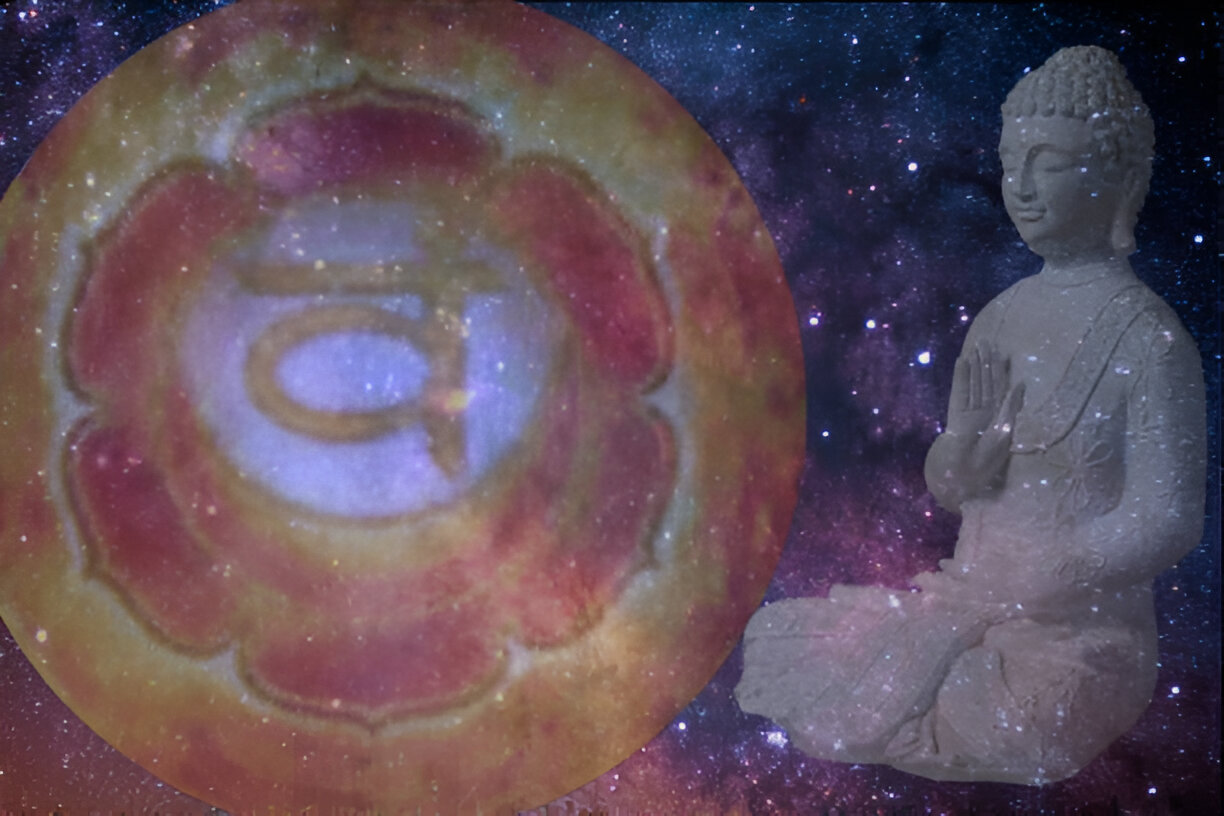

SYNOPSIS: The Bhagavad Gita (Lord’s Song) – 18 chapters in the epic Mahabharatha (chapters 25 to 42) – a transcript of the advice given by Lord Krishna to Arjuna on the battlefield at Kurukshetra, is often considered by most modern (post-modern rather) humans as antiquated and irrelevant to the times that are. However, the statements in the sidebar item, from stalwarts of yore – 20th and 19th centuries – are testimonial to the fact that this prevailing dismissive stand is questionable. The second chapter of the Gita – verily the lead-in to the 16 that follow it; the first being the deluded and afflicted Arjuna’s narration of symptoms – is the ‘psychiatrist Lord Krishna’s’ diagnosis of the symptoms, which leads, leading chapter by chapter to the cure which comes about towards the end of the 42nd chapter of the Mahabharatha (which is the 18th of the Bhagavad Gita. The Gita continues to be relevant in the 21st century, and will be so in the future as well, as a prescription for good, healthy, responsible and sustainable living. Youngsters in many households in India perhaps are used to chanting shlokas from the Gita. I used to do so in my early teens without understanding the import of the shlokas. But perhaps it was early days, and not the right time to try to understand the meaning. It is time to link understanding and knowledge with implementation and application.
The Bhagavad Gita – what it meant to them
| ‘….it has enduring value not just for Indians but for the whole world.’ – Aldous Huxley (1894-1963), British writer |
| ‘…treasure-house of Dharma, not just for the Hindus but for all mankind’ – Pandit Madan Mohan Malaviya (1861-1946), Indian educationist and freedom fighter |
| ‘One should not fail to thoroughly understand this ancient science of the life of a householder, or of worldly life, as early as possible, in one’s life.’ – Lokmanya Bal Gangadhar Tilak (1856-1920), Indian freedom fighter, teacher and social reformer |
| ‘The teachings of the ancient battlefield give guidance in all later days, and trains the aspiring soul in treading the steep and thorny path that leads to peace.’ – Dr Annie Besant (1847 – 1933), British theosophist, writer and orator |
| ‘The Gita is a book that has worn very well, and is almost as fresh in its real substance, quite as new and renewable in experience.’ Sri Aurobindo Ghosh (1872 – 1950), Indian philosopher, freedom fighter, yogi and guru |
The second chapter of the Gita (to read the verses cited in this article, please refer to https://bhagavadgita.io/) – verily the lead-in to the 16 that follow it; the first being the deluded and afflicted Arjuna’s narration of symptoms – is the ‘psychiatrist Lord Krishna’s’ diagnosis of the symptoms, which leads, leading chapter by chapter to the cure which comes about towards the end of the 42nd chapter of the Mahabharatha (which is the 18th of the Bhagavad Gita). It is no different actually from a father’s conversation with his son (which may be something which one does not get to see in the workaday, post-modern world), or that of a counsellor with a student confused about the right path for him after high-school. While it helps the deluded to understand the state of their minds, it helps the advisors and mentors among us to structure our approaches to healing, motivating and encouraging youngsters. This second chapter is simply called ‘The Yoga of Knowledge’ or Sankhya Yoga; and its 72 stanzas taken together constitute a dialectical build-up to a better understanding of life. The intended target readership of this article in OIOP is the youth of India, who are poised to take on challenges in the future which need to be surmounted with an iron will. The Bhagavad Gita, as Sri Aurobindo Ghosh has said, will always be relevant – a vade mecum to one and all in the years to come.
The leitmotif of the second chapter is of course the most popular stanza from the Gita –
This, in a nutshell, exhorts one to keep performing one’s duties with detachment and not worry about the results thereof. More about it later. It would be worthwhile taking a walk-through and deriving relevant advice from the stanzas in the chapter. The stanzas referred to are listed in the Appendix.
In the third stanza, Krishna starts off strongly by coming down to brass tacks, in essence, stating the intent of his discourse before launching into his lecture. This is what is often advocated by wise and insightful academicians these days – dwell on what you intend to achieve first, before going about explaining how. This is also vital for good conversations – articulate, clear, structured and mutually-beneficial ones, sans rambling, one-sided narrations which leave the hearers (or listeners) clueless about what is actually intended by the speaker! He deplores Arjuna’s weakness of mind straight away. We all know, by now, that ‘it is all in the mind’. Happiness is a state of mind, as they say. So is sorrow, or fear or anger. A strong mind does not oscillate between these extreme states. To keep one’s mind strong, one needs to make a conscious effort to constrain the amplitudes of these oscillations.
In the 11th stanza, he tells Arjuna that grief is unwise. He goes on to say why in the fourteenth stanza. Contacts of the sense organs with material objects are impermanent; and knowing this, one needs to endure changes in the external world, bravely. The reference here is as much to the inevitable (death for instance), as to the possible and probable (this is so, because it may not happen to everyone as a rule). By the latter is implied, loss or change of jobs, relocation of residence, need to trim down one’s lifestyle by sacrificing material possessions, inter alia. In the fifteenth, Krishna uses the term – Stithaprajna – stoicism. Grieving over impermanent and transient things, seen from a practical standpoint, is a hurdle to working and striving in the present. Well, this is difficult to comprehend or imbibe overnight. So, let us take an alternate path – a detour in other words, to make it easier for those who cannot give up materialism altogether (and this includes most of us). In fact, even if material possessions, fame and material success matter to a person, what one has lost or has had to sacrifice, may perhaps be replaced by something more valuable and longer-lasting, if he/she lets the dead past bury its dead and works in the living present. That brings us to accept the fact that physical manifestations keep changing; and getting caught in the whirlpool of attachment to these, is not what someone aspiring for wisdom would do. However, detachment should not be misinterpreted as discarding things and opting for new ones in the market, to keep up with the Joneses. This is a viewpoint which I have come across, during conversations. For instance, if you jettison your Nokia cell phone after one year, and get an iPhone, and then abandon that for something else (with better ‘features’) within another year, and claim to be detached, you are just being a smart alec. Detachment here, is freedom from attachment to desires; not individual objects per se. The desire for objects, as opposed to objects themselves. This is vital at this juncture in the 21st century when the earth is careening towards a host of problems – ranging from depletion of natural resources to scarcity of water to disparities between the rich and poor which would be harbingers of crime, unrest and hatred. People argue about ‘social welfare’ and ‘economic growth’ being compromised by a lop-sided focus on environmental upkeep. But cannot man define ‘well-being’ more responsibly? Walking and cycling, riding the bus or train, cease to be ‘well-being’ if the mind prefers to think that they do not contribute to it; and gets caught in the ‘automobile race.’
The 23rd stanza is like a reiteration of the 14th – a more concrete version of the abstract if one may say so. Understanding that ‘I’ perhaps does not really mean the body, mind or intellect; and focusing on ‘doing good, saying good and being good’ to purify the real ‘I’ – the soul beneath the less subtler layers of existence – is advised. Wherever one is, irrespective of the type of work one is doing, the people one is working with, the currency one is earning in, and the nature of one’s workplace, if the body, mind and intellect are used merely as tools to enable the soul to keep doing its good work, very soon, one develops the ability to be unfazed in the event of changes – turbulent or smooth. One refuses to compare and contrast one’s position in life with others. Neither arrogance and vanity, not despair and a feeling of inferiority take hold of him/her. Self-respect and modesty bring peace of mind in their wake. When one writes ‘I can take the rough with the smooth, in one’s job application covering letter, this is what one implies. Easier written than done, though!
The 27th stanza is very similar to what St Francis of Assisi said – Lord, grant me the serenity to accept the things I cannot change, the courage to change the things I can, and the wisdom to know the difference. By fretting over what you cannot change, you overlook what you can, and lose the opportunities to display courage in changing what you can. This does not mean that man is weak and insignificant in the scheme of things (this could be a mistaken interpretation at first read). It just means that each one of us has a limited control-sphere, defined by a set of responsibilities and duties. However, in the 33rd stanza, Krishna says that one should nevertheless stand up for what is right, and speak in favour of truth. Let us illustrate this with a mundane example. I would unfailingly deposit trash in the designated trash cans (these days, it is advisable to say ‘recycling cans’), and at times, even pick up what has been thrown by others on the street, and transfer them to a recycling can nearby. People may be watching me do this, but it would be naïve on my part to expect the city streets to be spick and span the next morning. I, in this case, have the courage to sustain my good behaviour and attempt to change the behaviour of others, by silently acting. But I must be willing to accept the fact that I cannot bring about a revolution overnight. I would need to be a high-placed official in the Municipal Corporation with the authority to both crack the whip and reward good behaviour, to make this happen. In the 29th stanza, it has been said, that people read about all this, speak about this as well, but refuse to understand and adopt what is implied in their daily lives. Either they are hemmed in by circumstances and so unable to practise what they feel and believe is right, or they are hypocrites.
In the 37th, Krishna tells Arjuna that working relentlessly and fulfilling one’s assigned duties is verily a Hobson’s choice for a man who does not wish to be humiliated, made fun of and deplored. It applies in post-modern society – the Kaliyuga – as well. You work hard, honestly, striving ceaselessly and executing your tasks at work and home, and fulfilling your responsibilities. If things are hunky-dory, there is happiness in store. If not, your efforts will still be lauded someday, and there are well-meaning people out there who will appreciate your dedication and sincerity and come over to assist you, in difficult times. If you do not perform your duties diligently, are lazy, pass the buck and prefer to lead a laidback existence, you end up being ostracized, shunned and ignored by the strong and principled; though birds of your feather will flock together with you. Bitter medicine, one would say. But also very effective. We often hesitate to call a spade a spade when we attempt to help, guide and motivate our friends. Yes, agreed that there are many ways of expressing the same truth. And the same medicine does not suit all patients, as is well-known. But the earlier one realises this potent truth, the greater the satisfaction he/she would derive from his/her life. Having said that, it must also be added that it is never too late to mend…better late than never. Not having tried something earlier, is no excuse to lapse into a disgruntled, cynical and lackadaisical existence.
In the 43rd, Krishna elaborates on what westerners these days would dub as ‘Practice what you preach’ or ‘Actions speak louder than words.’ The non-observance of these two principles has been a bane. All bluster and no substance; empty rhetoric not backed up by prompt action, false assurances made by people, showing off one’s knowledge without intending to benefit the listeners, are all to be avoided by seekers of wisdom. However, one must also be to others what one wants others to be to him/her. If you are put off by rambling discourses through which a person is just trying to prove to you that he/she is knowledgeable and knows more than you do, make sure that you do not put someone at the receiving end of such discourses.
Krishna then moves on to the crux and core of the Gita itself – the stanza which was referred to earlier in this article. ‘Work, work, and do not bother about the fruits.’ If anyone of you has been reading Swami Vivekananda’s essays, you will instantly realise that this is the message which he reiterates again and again. Ten years ago, someone, while debunking this message of the Gita, told me that it would not be possible to work without having any goals, aims or desires. I was not in a position to answer that question then. A couple of months ago, I watched the Tom Hanks starrer – A League of Their Own. Hanks’ statement – If it is not difficult, it cannot be great – brought back memories of this debunking. If I had seen this movie then, I would perhaps have responded by quoting Tom Hanks!
The 52nd stanza glorifies the attitude of equanimity. It is naturally human (more to do with body and mind in this case) and quite common to react to contrasting external stimuli, with varied emotions. Therefore, it one is steady and unfazed and in total control of one’s emotions, one stands apart from the crowd. One may then either become an object of adoration (which usually comes much later), or an object of hatred and abomination. The majority would want to paint you in its colours and absorb you into its ranks. If you have read Ayn Rand’s Fountainhead or for that matter, any of her other works, you would at once understand what I am trying to say. It is however good to remember that men who have distinguished themselves in history, were often derided and mocked at, before their worth was recognized. They were consequently immortalized, thanks to the power of their thoughts, which they put into words, and translated into action. Just as they say, ‘If the buying stops, the selling will’, if one tries hard to repel the influences of sensory objects which tempt, deceive and wound, the latter will also be wary of him/her and keep away. Recall how Jesus the Christ shunned what Satan offered him, and you at once see a parallel between the Bible and the Gita!
However, it is also necessary to guard against being carried away by the adulation and adoration which also fall to the lot of one who strives to be different. If brickbats are transient, so are the bouquets. As a first step, it is okay to use the bouquets to ignore the brickbats. Once perfect immunity to the brickbats has been attained, the bouquets are no longer needed. It is just like Sri Ramakrishna Paramahansa has said, ‘Use a thorn which has not hurt you to remove one which is embedded in your toe. Having done that, throw both away.’ Work on, and do not be carried away by praise. Let it soothe you and strengthen you for more work in the future. Praise is as impermanent as denigration.
In the 63rd, Lord Krishna refers to anger as an ‘inevitable destroyer’. In the present-day world, one could think of road rage (a fall-out of the desire of individuals to own cars; not realizing that it brings in more pain at times, than relief), misdirected anger (husband venting out his frustrations at his wife and children because his workplace-boss to whom he is subservient, insulted him), etc.
The Father of India, Mahatma Gandhi, was a votary of the Gita. He preached it to awaken the spirit of concerted action, non-violence and service among Indians. He also found it useful in his attempt to gain nationwide support for the non-cooperation movement. It was thus relevant in the first half of the 20th century to a Man of Peace. It continues to be relevant in the 21st century, and will be so in the future as well, as a prescription for good, healthy, responsible and sustainable living.
Youngsters in many households in India perhaps are used to chanting shlokas from the Gita. I used to do so in my early teens without understanding the import of the shlokas. But perhaps it was early days, and not the right time to try to understand the meaning. I have attempted to, over the years, as I approach middle-age, thanks to the works of commentators like Dr S Radhakrishnan (the second President of Free India), Swami Chinmayananda (spiritual guru and philosopher) and Mahatma Gandhi. The Chinmaya Mission (www.chinmayamission.org), for one, has taken huge strides in this respect – I was a beneficiary myself during my school days. It is time to link understanding and knowledge with implementation and Application



































































In the intricate tapestry of human emotions and relationships, love emerges as both a universal

Setting boundaries in relationships is very important for keeping mental health and feeling good. Boundaries

For older adults needing multiple prescriptions for chronic conditions, correct medication management is crucial. Proper

Buddhism is all about a big mix of beliefs and ways of living, including looking

Escape from Tarkov (EFT) is a tactical, first-person shooter game that has captivated the gaming
| Cookie | Duration | Description |
|---|---|---|
| cookielawinfo-checkbox-analytics | 11 months | This cookie is set by GDPR Cookie Consent plugin. The cookie is used to store the user consent for the cookies in the category "Analytics". |
| cookielawinfo-checkbox-functional | 11 months | The cookie is set by GDPR cookie consent to record the user consent for the cookies in the category "Functional". |
| cookielawinfo-checkbox-necessary | 11 months | This cookie is set by GDPR Cookie Consent plugin. The cookies is used to store the user consent for the cookies in the category "Necessary". |
| cookielawinfo-checkbox-others | 11 months | This cookie is set by GDPR Cookie Consent plugin. The cookie is used to store the user consent for the cookies in the category "Other. |
| cookielawinfo-checkbox-performance | 11 months | This cookie is set by GDPR Cookie Consent plugin. The cookie is used to store the user consent for the cookies in the category "Performance". |
| viewed_cookie_policy | 11 months | The cookie is set by the GDPR Cookie Consent plugin and is used to store whether or not user has consented to the use of cookies. It does not store any personal data. |
One Response
Amazing analysis of the greatest spiritual text of the world. Great to see a Very lucid and simple explanation stanza by stanza of this great text. Even a simple man would manage to understand the essence of the text. Great work well done.